A Conflict Series: How the United States' Counterterrorism Initiatives End up Feeding Terrorism
It has been more than fifteen years since the September 11 attacks and the consequent advent of the “Global War on Terror”, and yet terrorism remains one of the biggest topics in the news and in our collective conscious. While the presidency of the United States, and consequently the strategy to fight terrorism, has changed in that period, few could argue that counterterrorism does not remain a primary objective of the United States and the rest of the Western world. A pillar stone of the United States' policy of counterterrorism, along with military intervention, has been the use of foreign aid as a security building measure. The line of thinking goes that if a government has more money, they will be able to create a stronger security apparatus to choke out any space for terrorism. There will be nowhere for terrorists to run, and nowhere to hide. In light of the recent bombings in New York, and the multiple attacks in France, I strongly disagree.
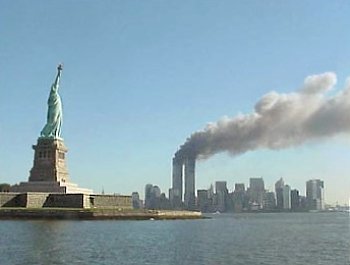
9/11/01 Attack on the Twin Towers, NYC- (Source)
When most people of the general public think of terrorism and war, they think of Afghanistan, Iraq, and maybe Iran. And yet, according to the Global Terrorism Database, Yemen is one of the most prominent locations for the occurrence of terrorist attacks. Similarly, Al Qaeda of the Arabian Peninsula, recognized by the Western security apparatus as the most dangerous remaining branch of Al Qaeda, has most of its leadership hierarchy in Yemen. The United States has also been giving the Yemeni state substantial amounts of Official Development Assistance (ODA) for years now. In other words, a perfect place to analyze whether or not ODA is effective in combatting terrorism. I'll show you below why it is not.
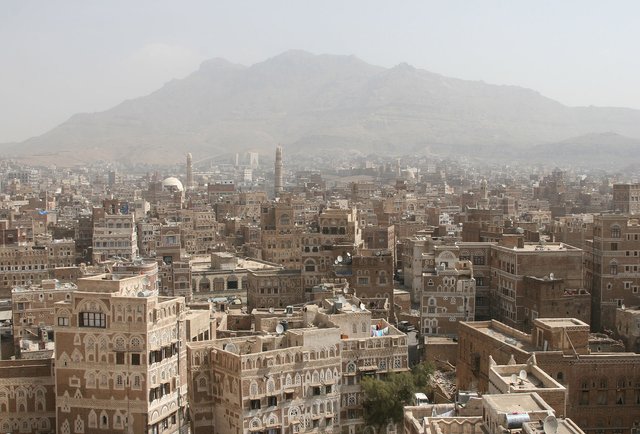
Sana'a, Capital of Yemen - (Source)
The Numbers
Just to begin my argument, here are two graphs representing, respectively, American foreign aid to Yemen and the number of terrorist attacks in the country.
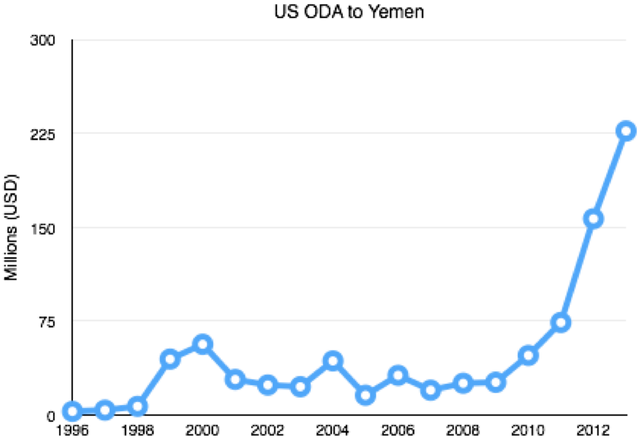
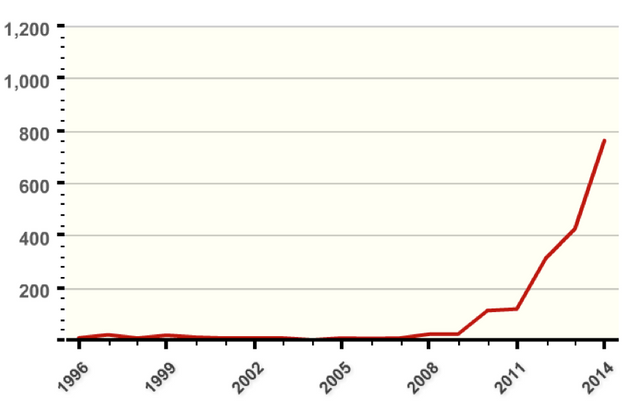
As you can see, contrary to American policy and beliefs, there is a correlation between increased aid and increased terrorism. That would seem counterintuitive. So why is that?
A Little History of Yemen's Conflict
Yemen is currently a deeply unstable country rooted in a multi-factional conflict that stems from weak government, tribal conflict, and terrorist infiltration. Yemen's conflict can essentially be divided into four main factions aligning themselves against one another along political, ethnic, and religious lines.
- The internationally backed government of President Hadi, supported by the Sunni South in the form of militias known as Popular Resistance Committees, as well as local tribesmen.
- Former President Ali Abdullah Saleh, backed by the Zaidi (a form of Islam) Houthis (an ethnic group)
- AQAP-Al Qaeda of the Arabian Peninsula
- The recently formed regional affiliate of ISIS
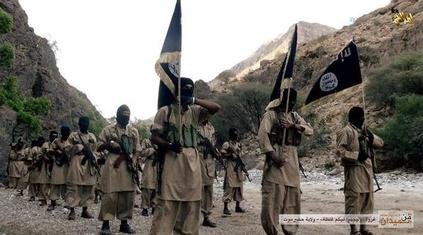
Al-Qaeda in the Arabian Peninsula (AQAP) - (Source
They are all, more or less, fighting one another and for a variety of reasons. The United States has supported the central Yemeni government (that of President Hadi) since the aftermath of 9/11,when the Yemeni government made a decision to align itself with the US as a partner in its War on Terror. As a result, the US has carried out many drone strikes and arrested a large number of the Yemeni Al-Qaeda leadership. AQAP has linked the resulting widespread anti-American sentiment in the region with the similarly widespread opposition to the domestic leadership by tapping into the public view of the government as corrupt, militaristic, and unequal. This extends to ISIS and the Houthis as well, who denounce the influence of US assistance and simultaneously tout the failures of the central government. Basically, the US government is propping up the Yemeni government, and all their enemies are using that fact (combined with anti-American sentiment) to gain support from the people.
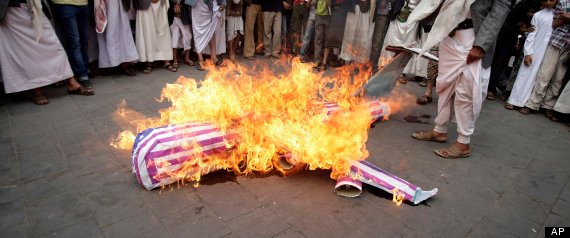
Anti America Protest in Yemen - (Source)
This conflict is further grounded in religious beliefs, which, while obvious in the case of ISIS and Al-Qaeda, is also of great importance in the conflict between President Hadi and the Houthis. As mentioned before, the Houthis are of the Zaidi sect of Shia Islam. President Hadi and his followers, on the other hand, tend to be Sunni Salafists espousing Wahhabism.
Why Aid Does Not Work As Counterterrorism in Yemen
All of these divides and differing motivations have fueled the regional conflict, and also the spike in terrorism witnessed over the past 5 years. While the US has increased the amount of aid it has devoted to Yemen in the hopes of countering terrorism in the nation, it has been ineffective. This is likely for two main reasons.
- US intervention in the region polarizes public opinion and drives a wedge between the factions within the country. It risks driving a wedge between the central government and their local tribal supporters and thereby plays directly into the hands of terrorist networks. (basically because everybody but the central government hates America)
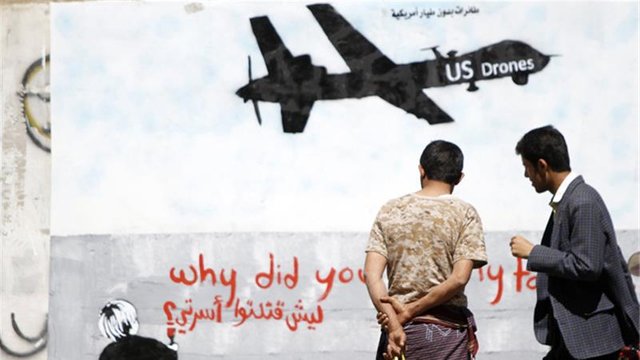
Anti-USA Grafitti in Yemen - (Source) - The US gives aid to Yemen to create a strong security apparatus. This strategy is taken under the assumption that diminished state control will lead to Yemeni tribes giving AQAP safe haven if the central government shrinks. However, this assumption completely ignores the reality of the Yemeni political landscape. In Yemen, in places where the central state functions without disturbance by the Houthis, a considerable degree of power is brokered through informal patronage networks. For large portions of the country, the presence of central government troops is seen as intrusive and threatening to the livelihoods and well-being of the people. As a result, creating a strong central state makes it far more likely for the people to harbor terrorists.
Yemeni Tribal Meeting - (Source)
How this Applies to Other Countries
While perhaps the policy of American state to use foreign aid as a counterterrorism tool may not be inherently at fault in the rise of terrorism in Yemen, the policy's complete disregard for cultural and political context is. If policy and decision makers within the government had done more research and recognized that the reality on the ground in Yemen makes it that political power is decentralized through personal allegiances and bonds, perhaps they would have realized that giving a bunch of money to a centralized state whose goal it is to undermine those things would create unrest.
These problems apply to other states where the United States uses foreign aid for counterterrorism as well. If the United States is too monolithic, inflexible, and arrogant to adequately research the regions they are interacting with, it is inevitable that attempts at interfering in those regions (whether it be through financial aid or military intervention) will come to nothing at best, and create dangerous enemies at worst.
Ultimately, the United States must realize that just because it has the most money and the largest military in the world does not guarantee that its efforts will succeed. Ultimately, the United States is just another player in the game. And, as in all games, blindness and arrogance will almost inevitably lead to losing.
Sources
- Azam, Jean-Paul, and Alexandra Delacroix. 2006. “Aid and the Delegated Fight Against Terrorism.” Review of Development Economics 10 (2): 330–44. doi:10.1111/j.1467-9361.2006.00321.x.
- Azam, Jean-Paul, and Véronique Thelen. 2008. “The Roles of Foreign Aid and Education in the War on Terror.” Public Choice 135 (3/4): 375–97. 2010. “Foreign Aid Versus Military Intervention in the War on Terror.” The Journal of Conflict Resolution 54 (2): 237–61.
- Cassidy, Traviss. 2010. “How Foreign Aid Affects Terrorism: Studying the Channel of Social Spending.” Issues in Political Economy, no. 19: 69.
- Cottle, Stephen J. 2013. “The Impact of U.S. Foreign Aid on International Terrorism.” M.P.P., United States -- District of Columbia: Georgetown University. http://search.proquest.com/docview/1351979112/abstract.
- Healy, Sally, and Ginny Hill. 2010. “Yemen and Somalia: Terrorism, Shadow Networks and the Limitations of State-Building.” The Royal Institute of International Affairs. http://www.chathamhouse.org/sites/default/files/public/Research/Africa/bp1010 _yemensomalia.pdf.
- Mahanty, Daniel R. 2010. “The Aid for Security Dilemma: The Distortive Impact of U.S National Security Interests on Development Assistance.” Master of Arts in Security Studies, Georgetown University.
- “Renewed Violence in Iraq.” 2015. Council on Foreign Relations. http://www.cfr.org/iraq/renewed-violence-iraq/p28808.
- “The Sunni-Shia Divide.” 2015. http://www.cfr.org/sunnishia.
- “Yemeni Political, Religious Movements Divided over Nation’s Future - Al-Monitor: The Pulse of the Middle East.” 2015. Al-Monitor. http://www.al-monitor.com/pulse/originals/2013/12/yemen-religious-political-parties-dispute.html.
What if the US is only using the threat of terrorism to achieve his goals? What if the US has created the threat of terrorism so that it can get more centralised power?
If you are interested in history, see my Today in History article.
It really wouldn't surprise me, although I don't like to jump to conclusions. A lot of research I have done does suggest that in some ways, but I'm not convinced. I think the other thing to remember is that "the US" is not one thinking, breathing entity, but a multitude of players that ultimately represent a variety of interests.
But yeah, I'm very interested in history, I checked out your blog and followed.